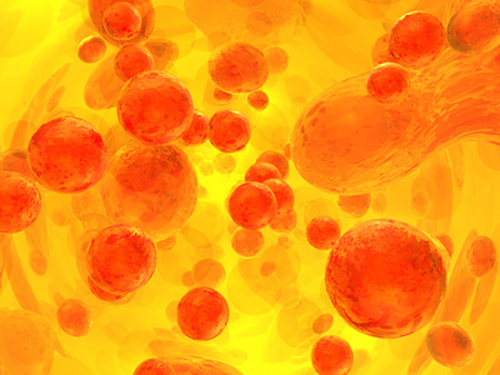Approach uses aAPC system to give CTLs a central memory, effector memory phenotype, and capacity to persist in vivo.
Scientists have developed a technique that enables T cells used in adoptive T-cell therapy against melanoma to persist in the body for prolonged periods and generate some antitumor responses. The approach taken by the Dana-Faber Cancer Institute-led team used a human artificial antigen-presenting cell (aAPC) system to expand and essentially educate antitumor CD8+ T lymphocytes (CTLs) taken from patients to acquire a central memory and an effector memory phenotype as well as the capacity to survive for prolonged periods when infused back into the patient.
The aAPC system and initial Phase I trial results are described in Science Translational Medicine in a paper titled “Establishment of Antitumor Memory in Humans Using in Vitro–Educated CD8+ T Cells.”
The failure of adoptive T-cell immunotherapy against cancer using CTLs is believed to largely relate to the inability of CTLs to persist in vivo, report Marcus Butler, M.D., at Dana-Faber’s department of medical oncology, and colleagues. Approaches to address the longevity of T-cell immunotherapy have included administering patients with IL-2 or subjecting them to preinfusion lymphodepletion using myeloablative therapy combined with IL-2 administration. However, these approaches can have severe side effects.
Dr. Butler’s team had previously developed a human cell-based aAPC genetically engineered to express HLA-A2, CD80, and CD83. This aAPC system was found to be capable of expanding large numbers of CTLs against tumor-associated antigens in vitro from peripheral CD8+ T cells in the presence of IL-2 or IL-15.
In their latest research the Dana-Faber team and colleagues tested whether antitumor CTLs expanded in the presence of the aAPCs could persist in humans. They used the system to educate and expand MART-1 melanoma antigen-targeting CTLs from nine melanoma patients. The resulting cell populations were then infused back into the patients, without lymphodepletion , IL-2 administration, or other treatments.
The cells were not only found to persist in treated patients but increased in number over time. Analytical assays suggested the cells traveled to the lymph nodes, acted as functional memory T cells, and triggered robust antitumor responses. Overall results in the small group of patients were mixed but included disease stabilization for a year or more and tumor-regression. One patient remained apparently disease-free for over two years.
Although the treatment was insufficient on its own to ultimately prevent tumor progression in most patients, “establishment of antitumor memory by engraftment of infused CTLs may shift the balance between tolerance and antitumor immunity,” the authors write. They did find that primed antitumor immune responses could be enhanced by additional CTLA-4 blockade, which led to tumor regression in patients with previously progressive disease.
Further improvements may be achieved by combining CTL transfer with other approaches such as lymphodepletion to eliminate immune-suppressive elements such as regulatory T cells, the researchers suggest. “Adoptive transfer of CTLs generated with aAPC therefore provides a platform for establishing antitumor memory, which can then be combined with immune modulators such as checkpoint inhibitors, lymphodepletion, cytokines, or vaccination to improve tumor regression and patient prognosis.”






